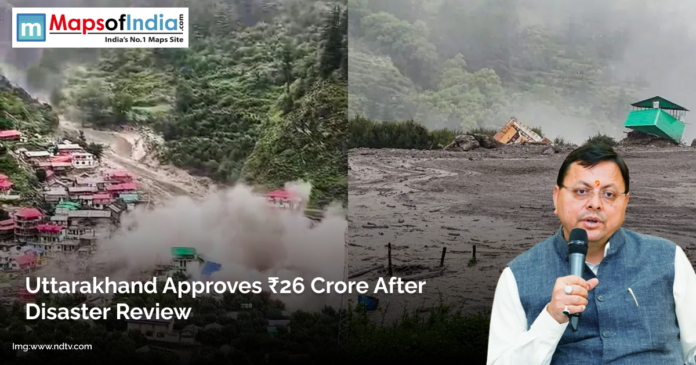The Uttarakhand government has ratified 3 disaster-impacted districts of the state with an amount of 26 crore in a major move towards speeding up relief and rehabilitation activities in the state. It made such a decision after going through the destruction wrought by the recent natural disasters, like heavy rains, landslides, and flash floods, that affected some areas this monsoon season.
The money, according to the official sources, has been disbursed through the State Disaster Response Fund (SDRF) to enable instant assistance to individuals and the infrastructure that have been affected by the disasters. The distribution is interested in aiding district administrations to reestablish vital services and offer ample payment to the concerned population.
This was a superior-level review meeting, which was conducted earlier this week. The officials of the disaster management department provided detailed reports detailing the extent of damage. The evaluation included loss of life, property damage, destruction of crops, soil, erosion and damage to key infrastructure like roads, bridges, electricity lines and drinking water systems.
After the review, the government resolved to pay the ₹26 crore to the three severely affected districts immediately. The funds will be used for:
- Relief distribution in case of an emergency.
- Rebuilding of broken roads and social infrastructure.
- Reestablishment of the water and electricity.
- Support to families that were rendered homeless or jobless.
- Loss of crop and livestock compensation.
The state officials stressed that the first point is to make sure that no harmed family is left alone. The district magistrates have been given instructions to accelerate relief funds and restore the work as soon as possible. The government also instructed them to be transparent and report to the disaster management department on a regular basis.
Uttarakhand is a sensitive state characterized by its terrain and susceptibility to climate-induced disasters and calamities have been characterized by regular cases of landslides and cloudbursts. These were reiterated by the government in its efforts to enhance disaster preparedness through better early warning systems, resilience of infrastructure and providing local personnel with better response capacity.
The financial aid received by the residents of the affected districts was a welcome reprieve to those who had been suffering weeks of inconvenience. Most villages are still half-isolated, not having approach roads repaired, and reconstruction efforts are likely to be accelerated with the release of the funds.
The state is hoping to stabilize the situation with a relief package of 26 crore, and the loss in the long run is limited so that the families affected by the situation can go back to normal within as little time as possible.










